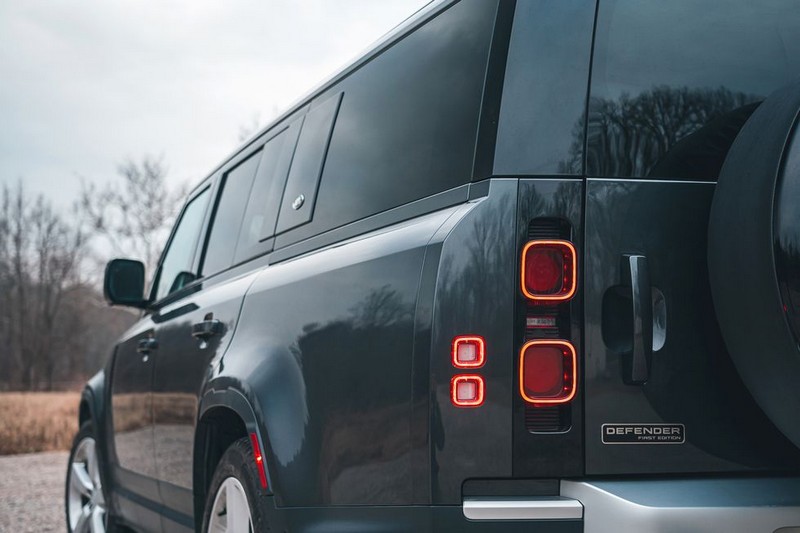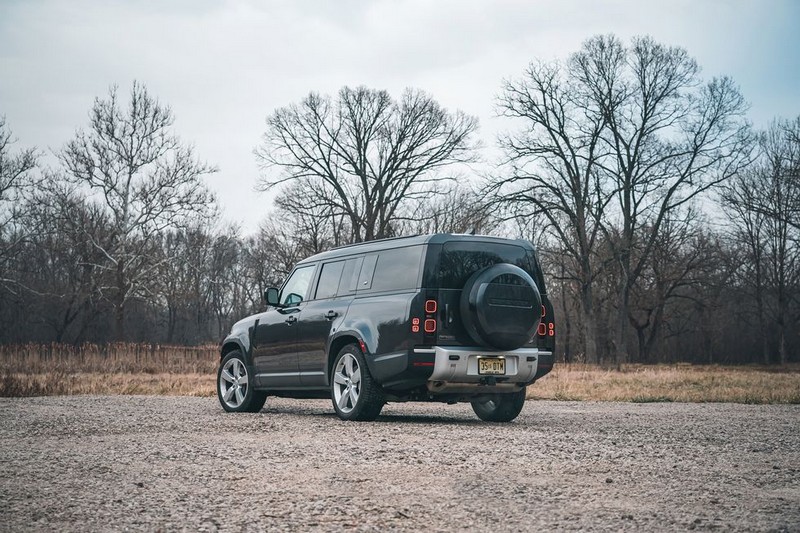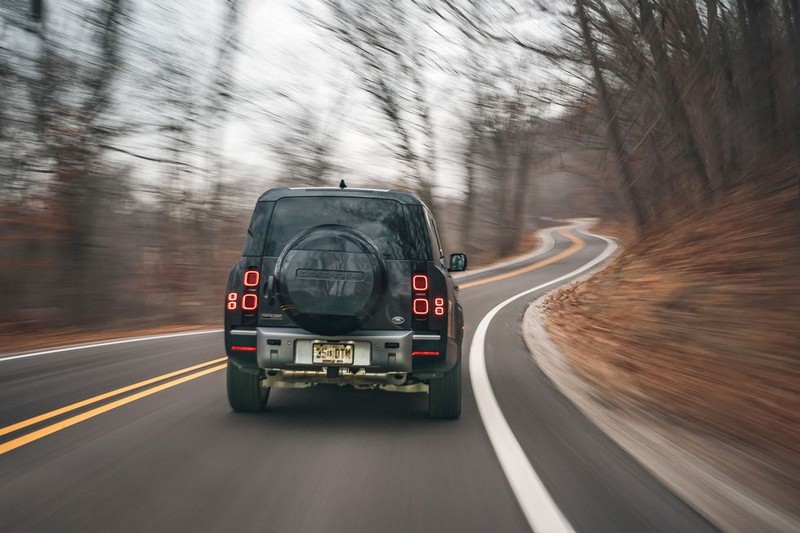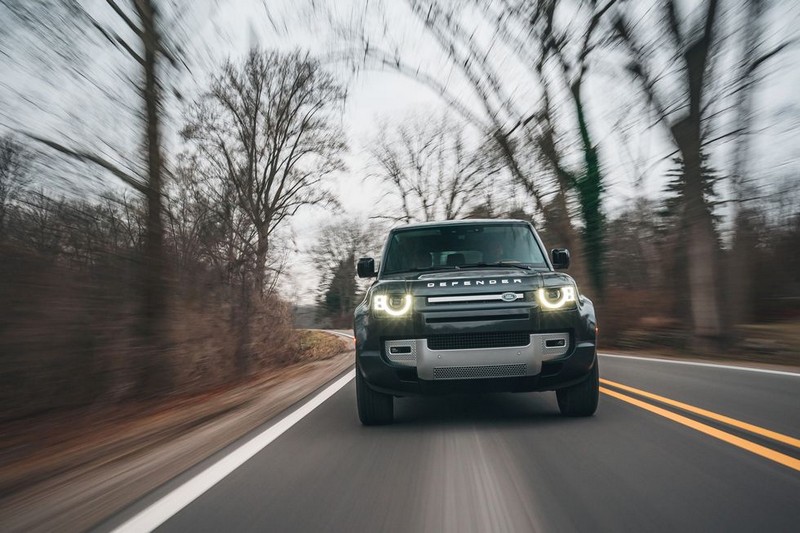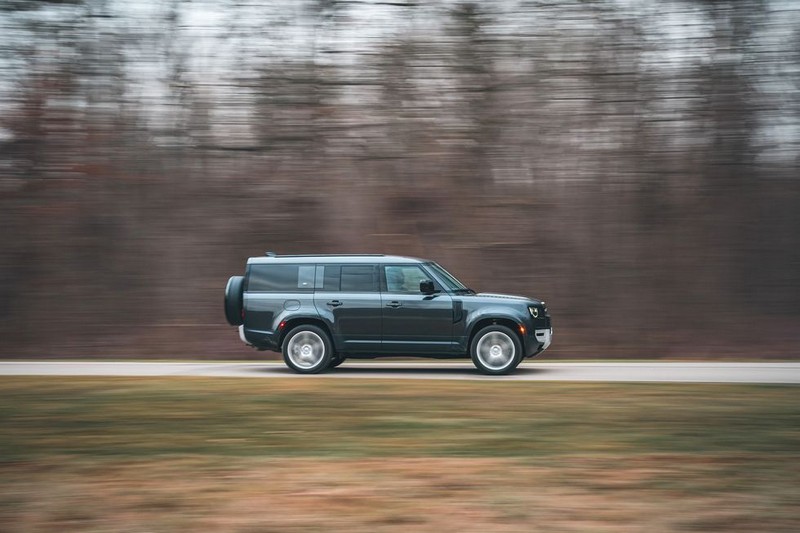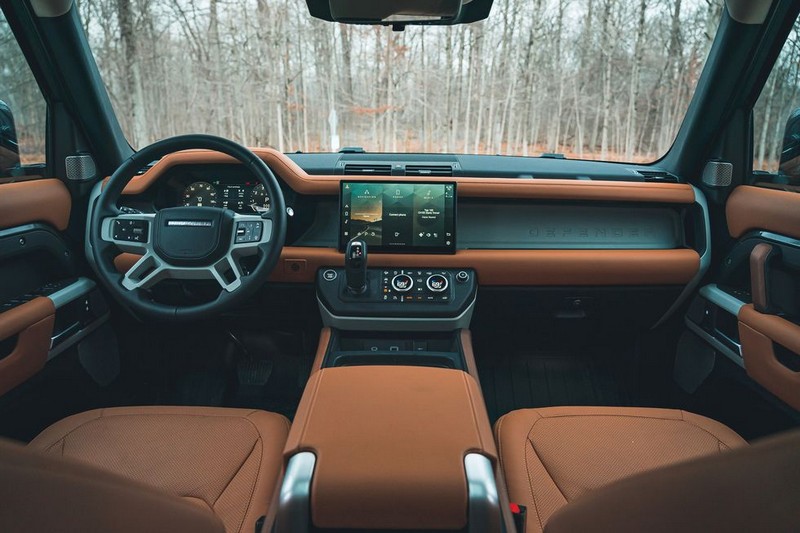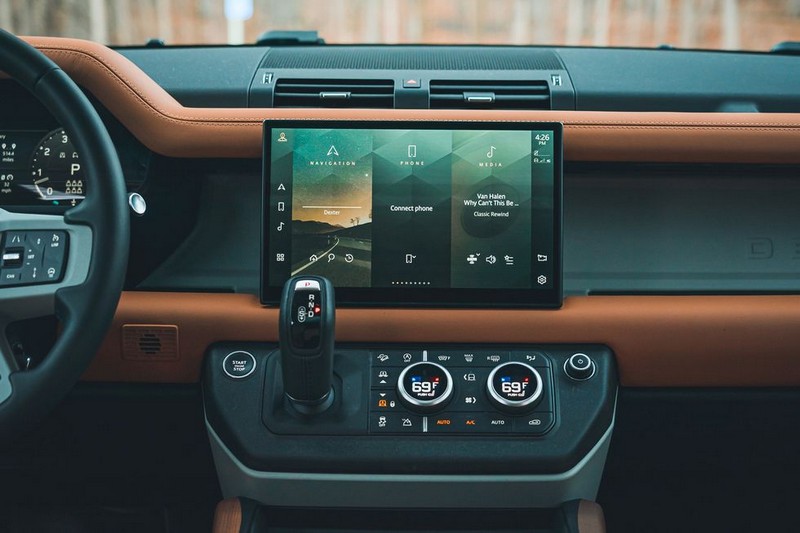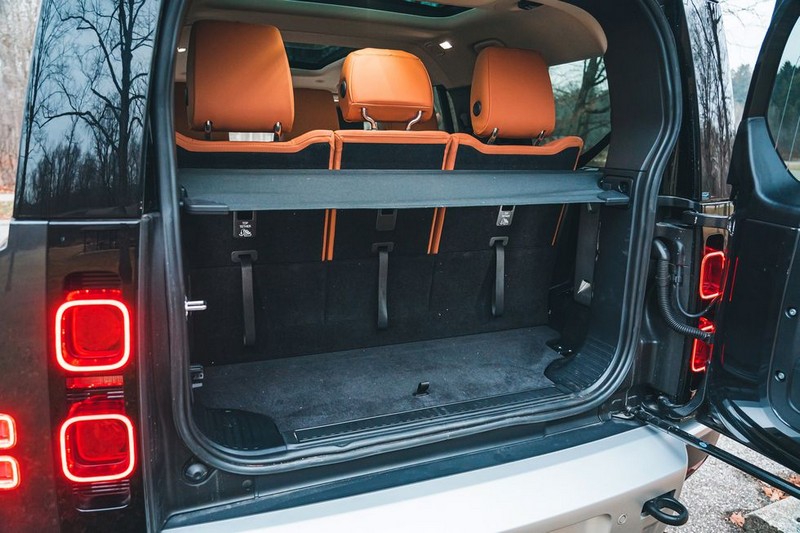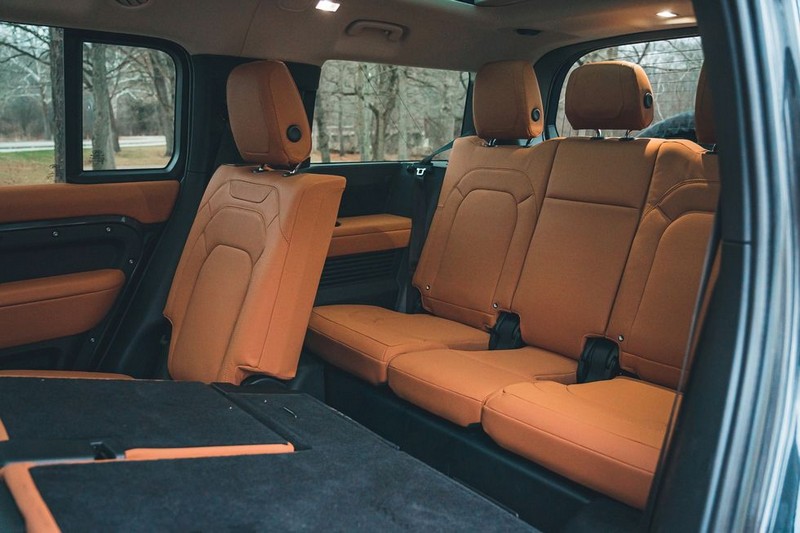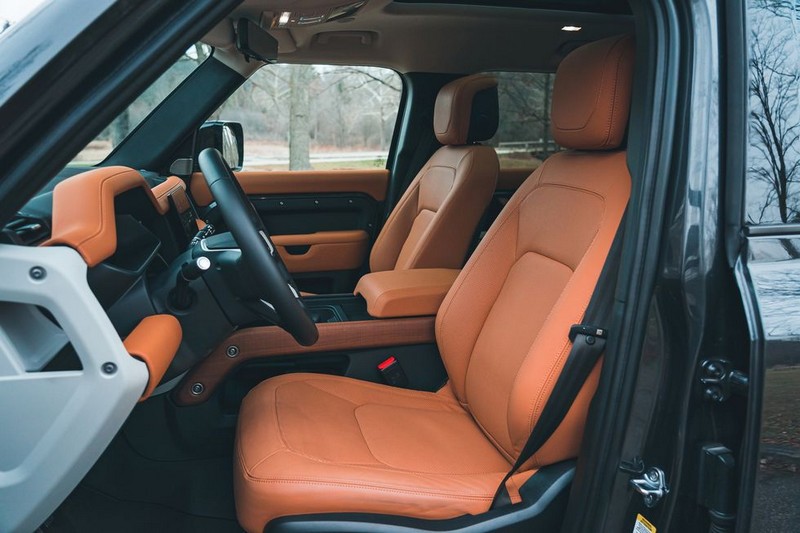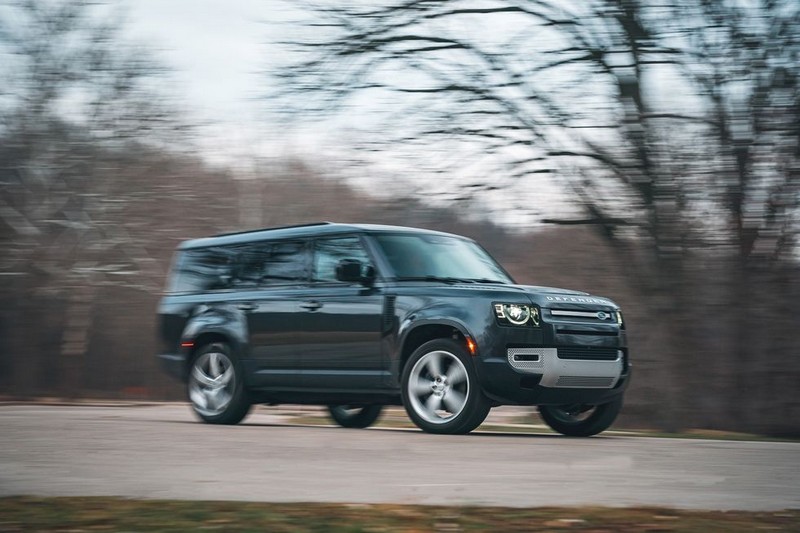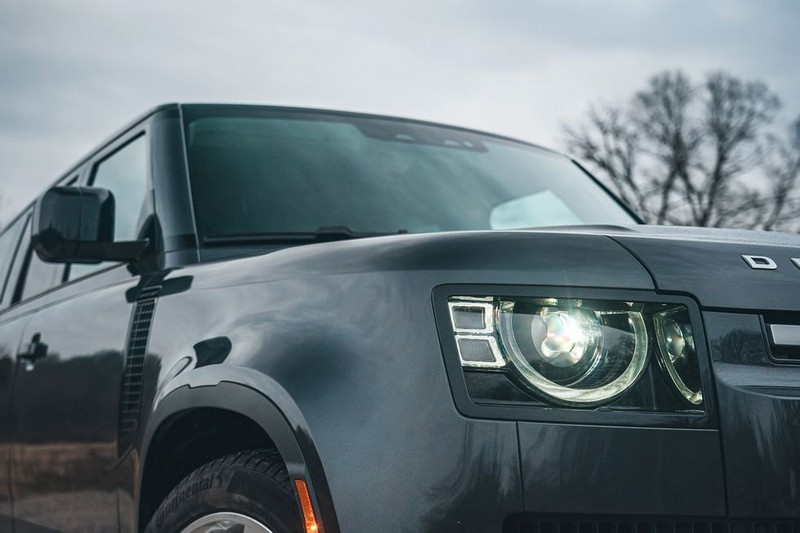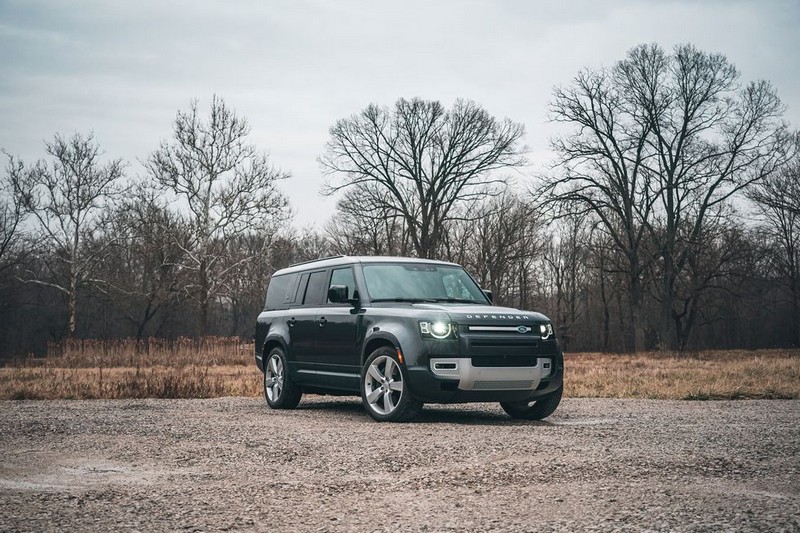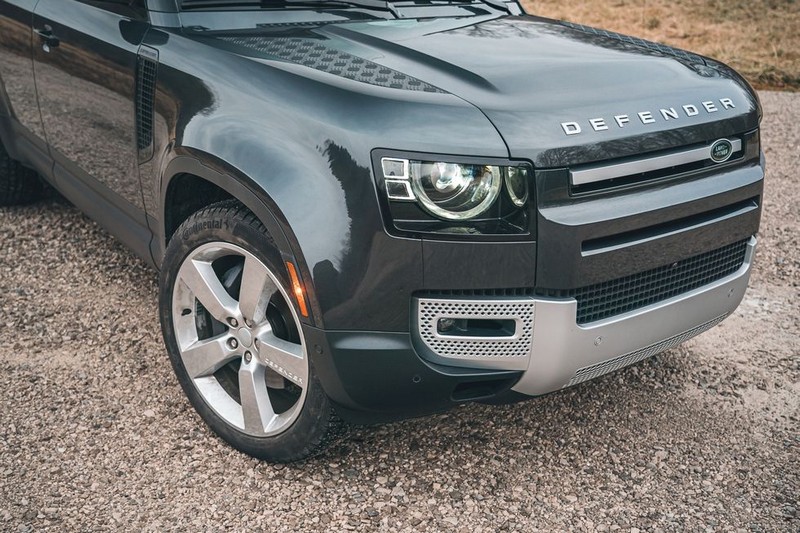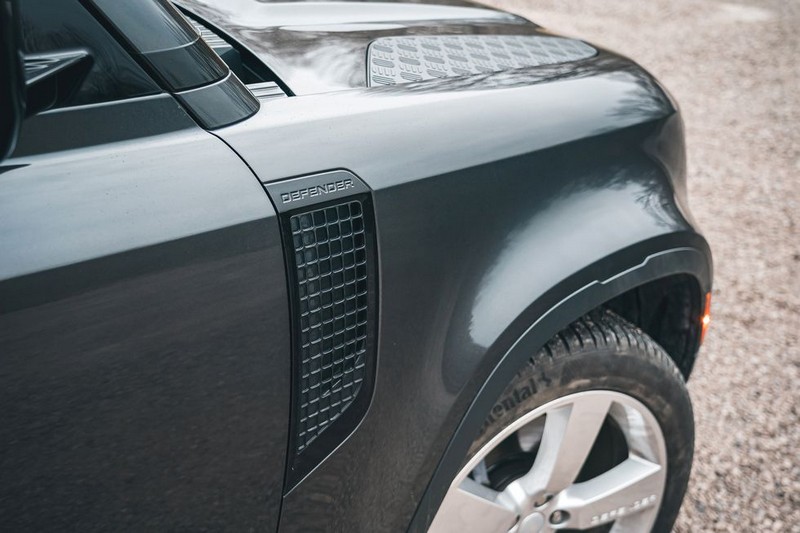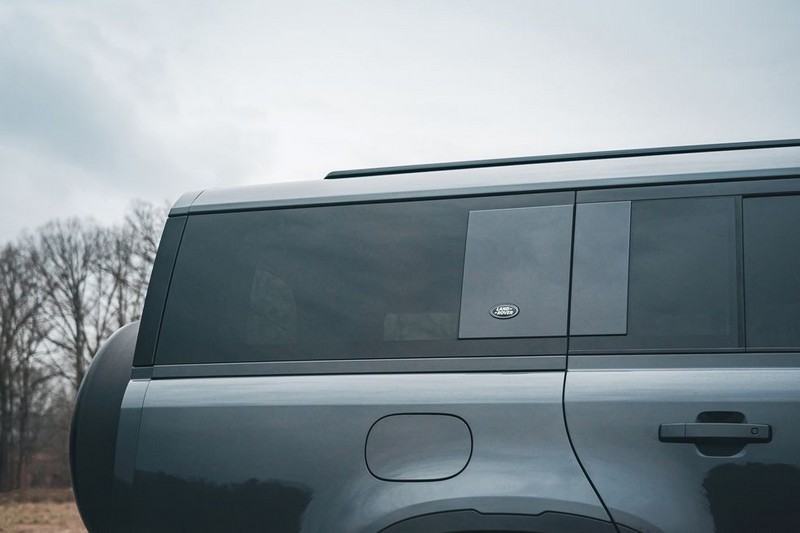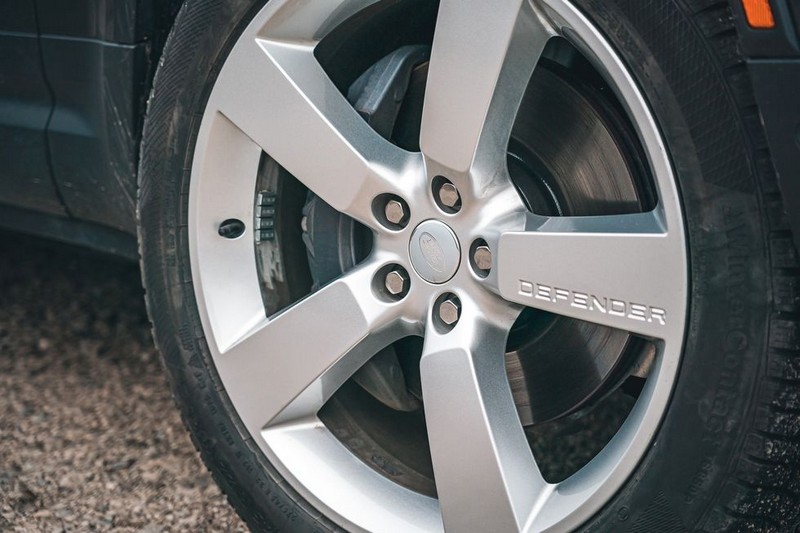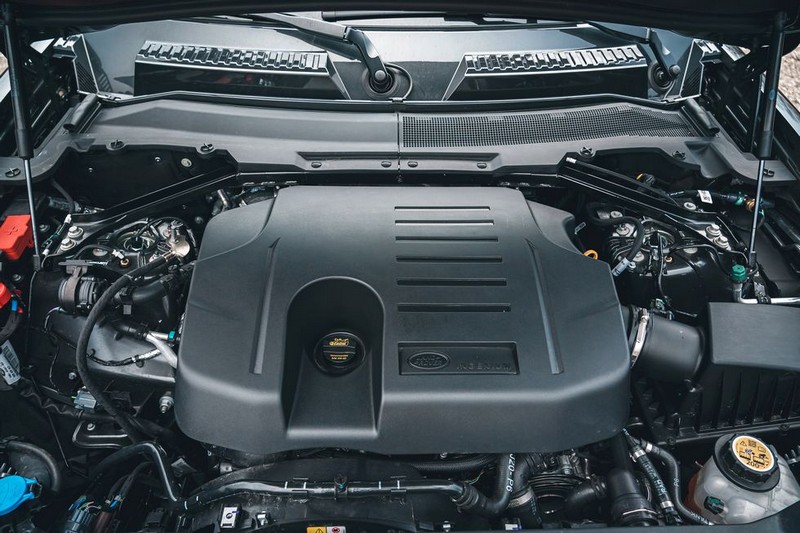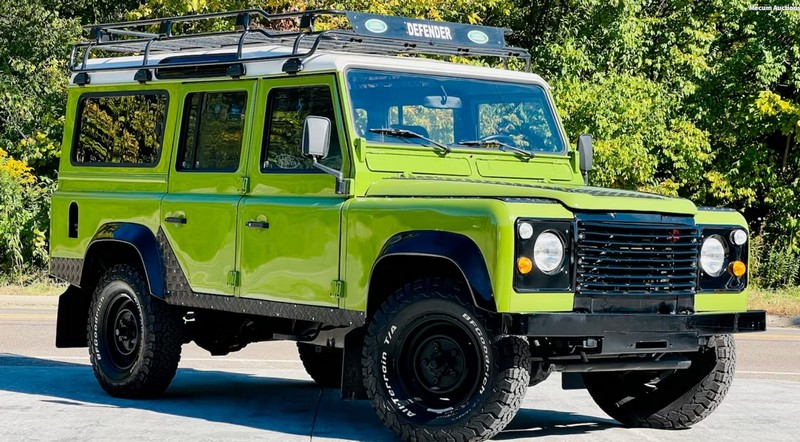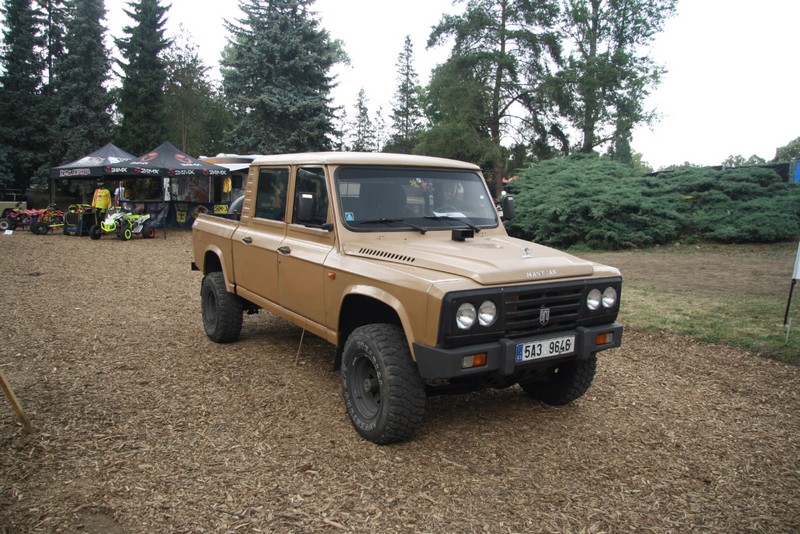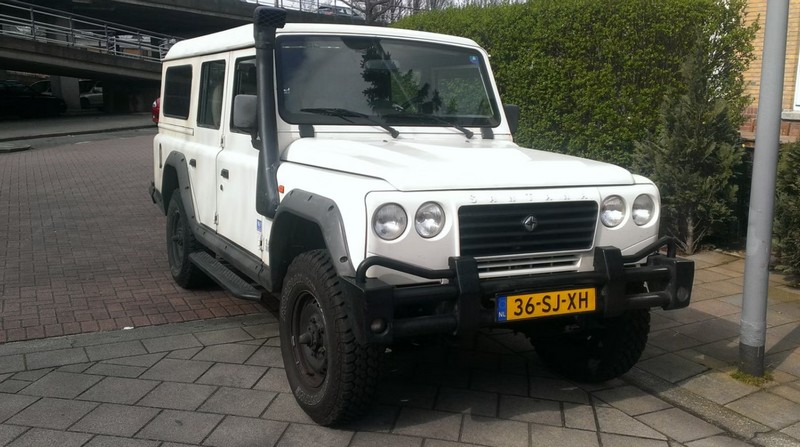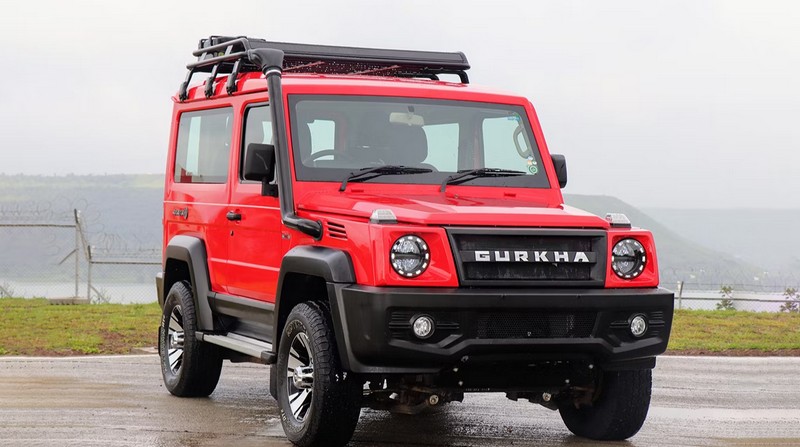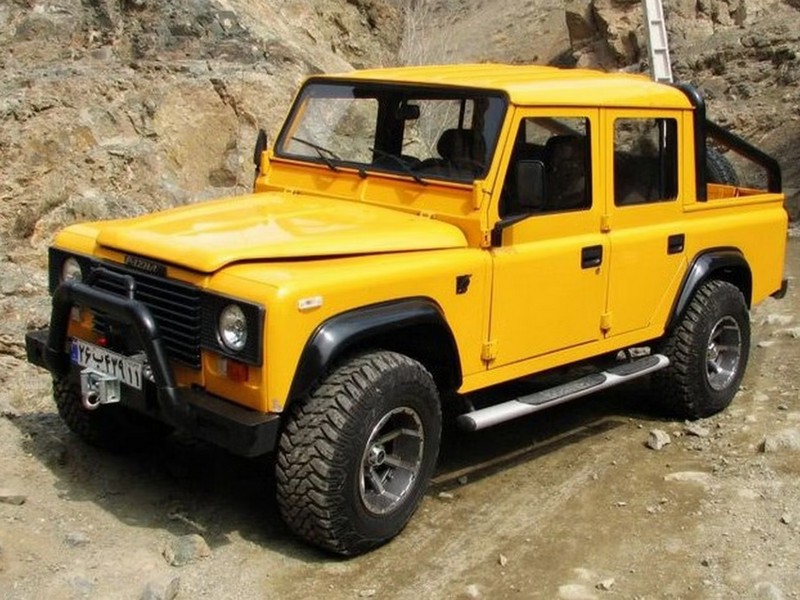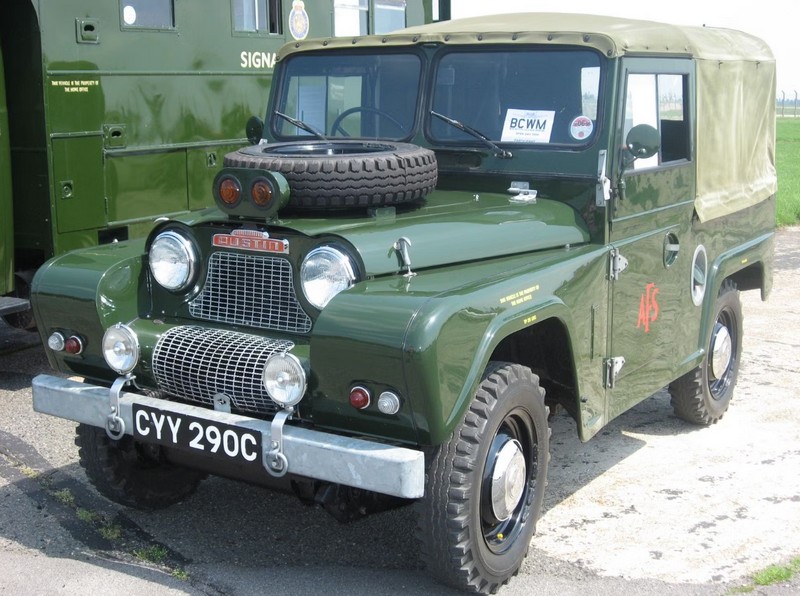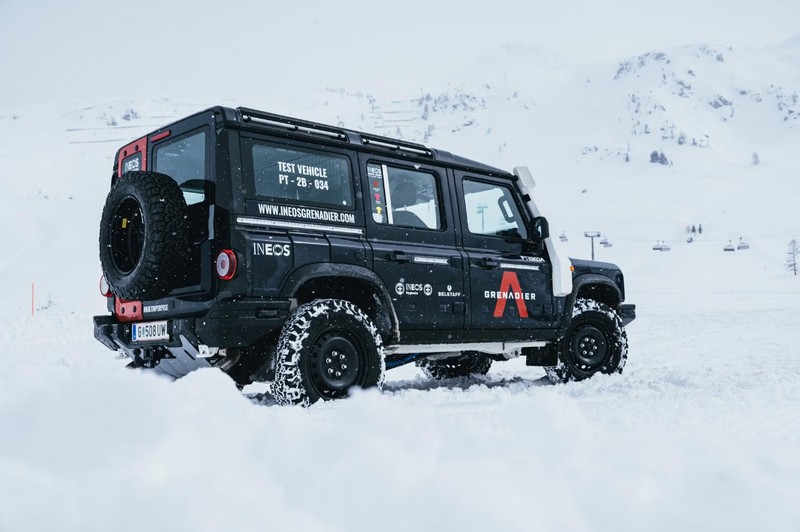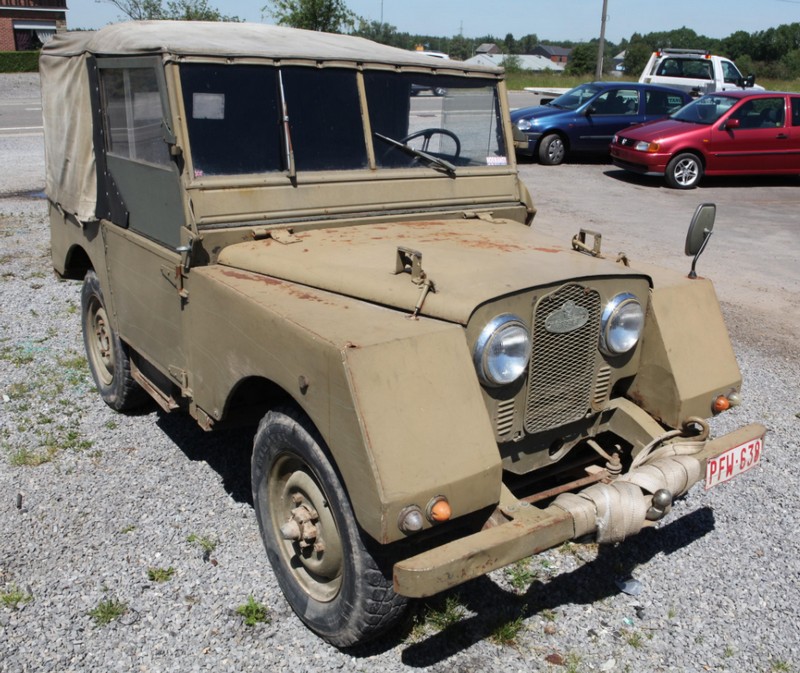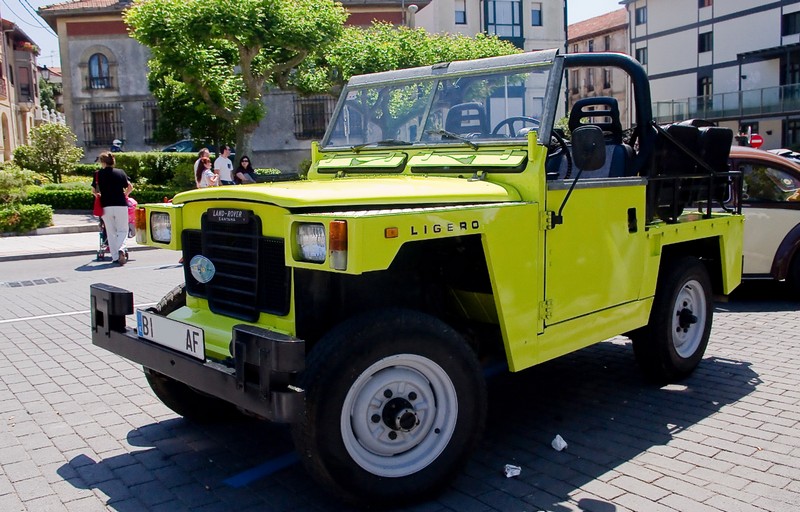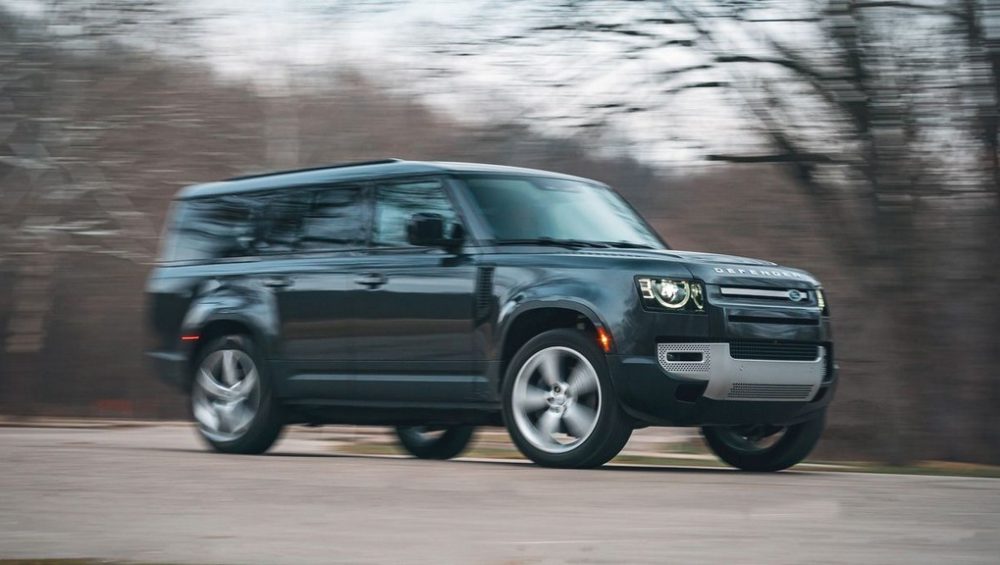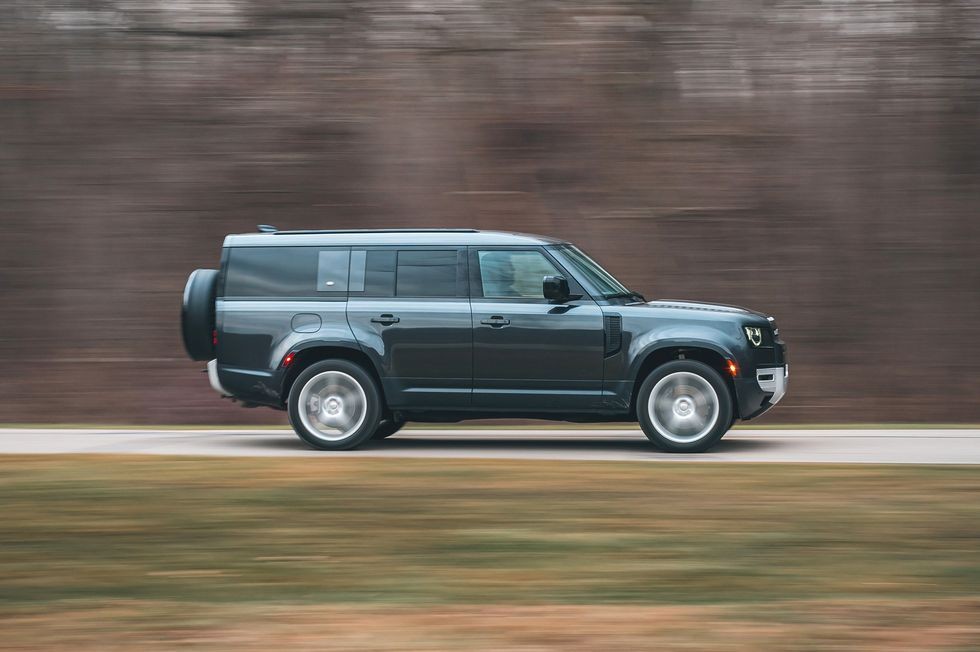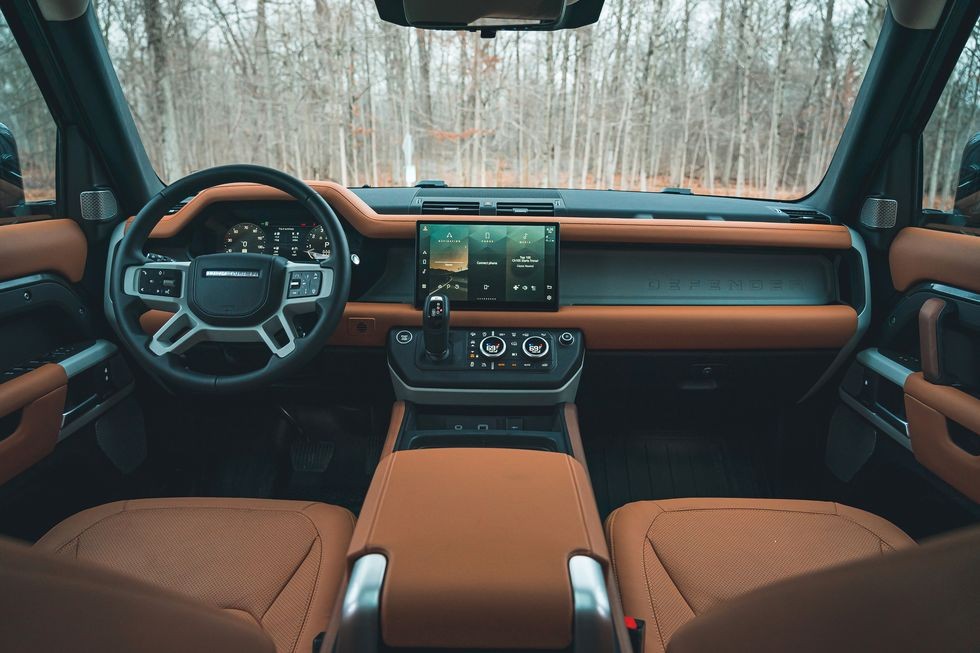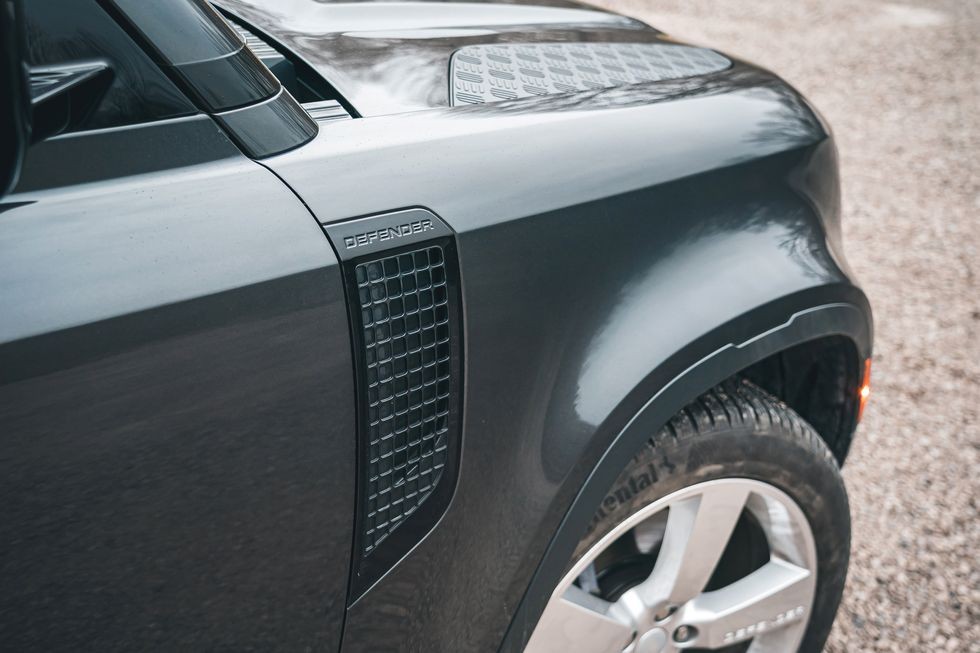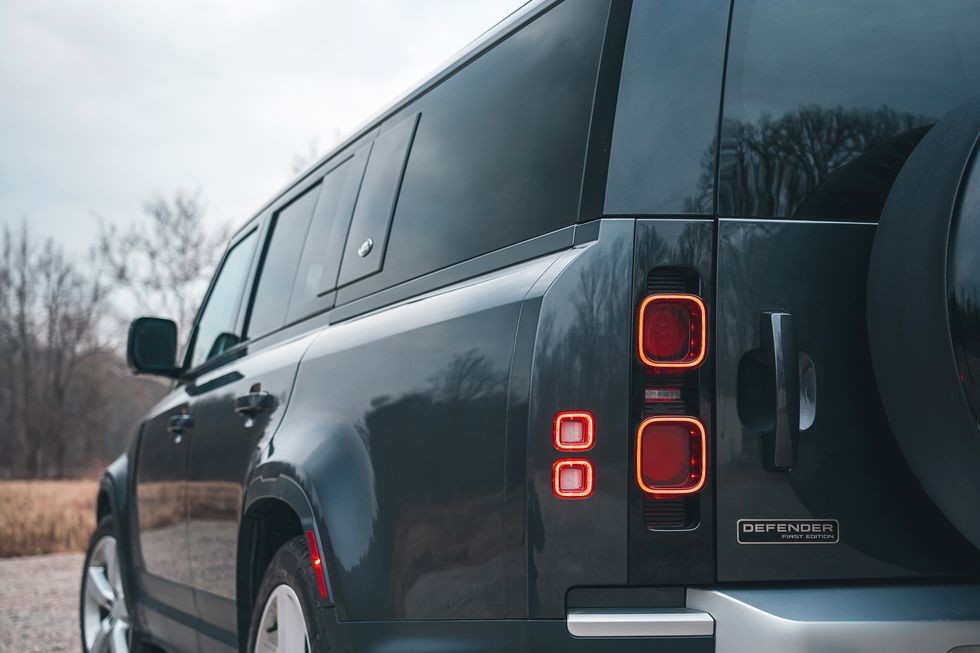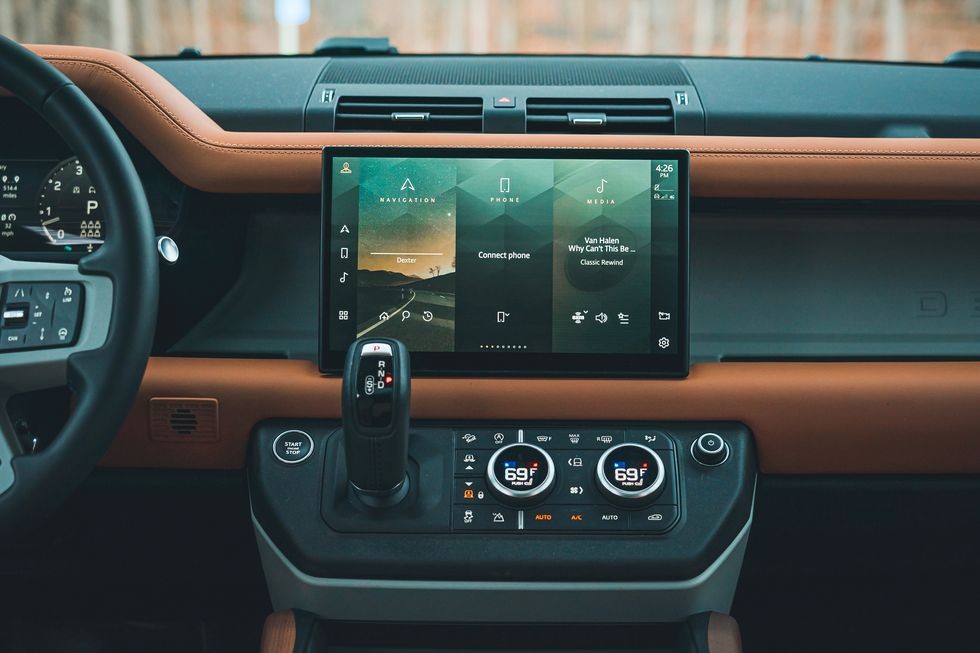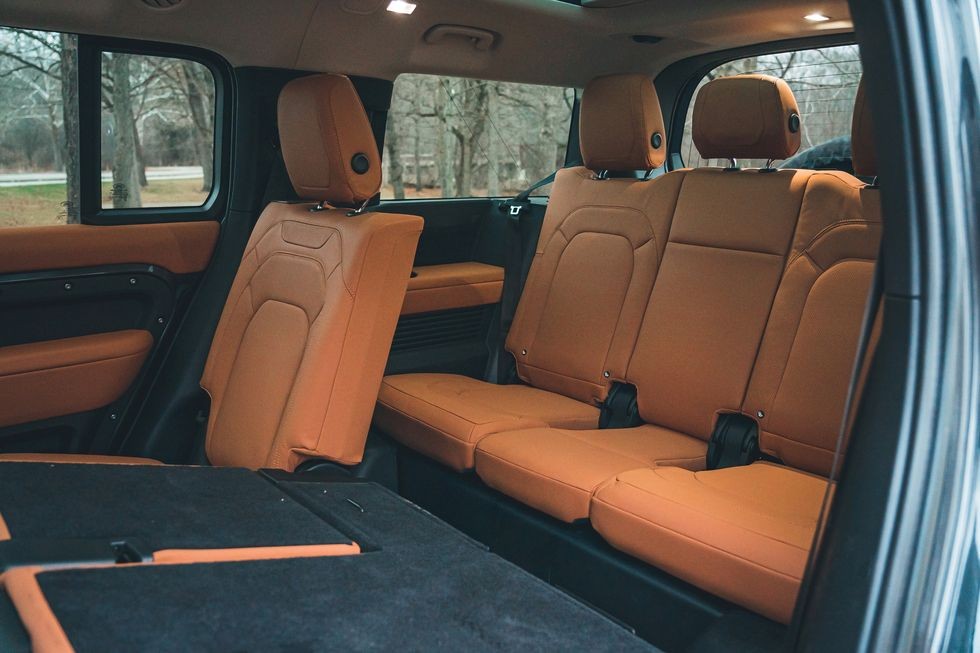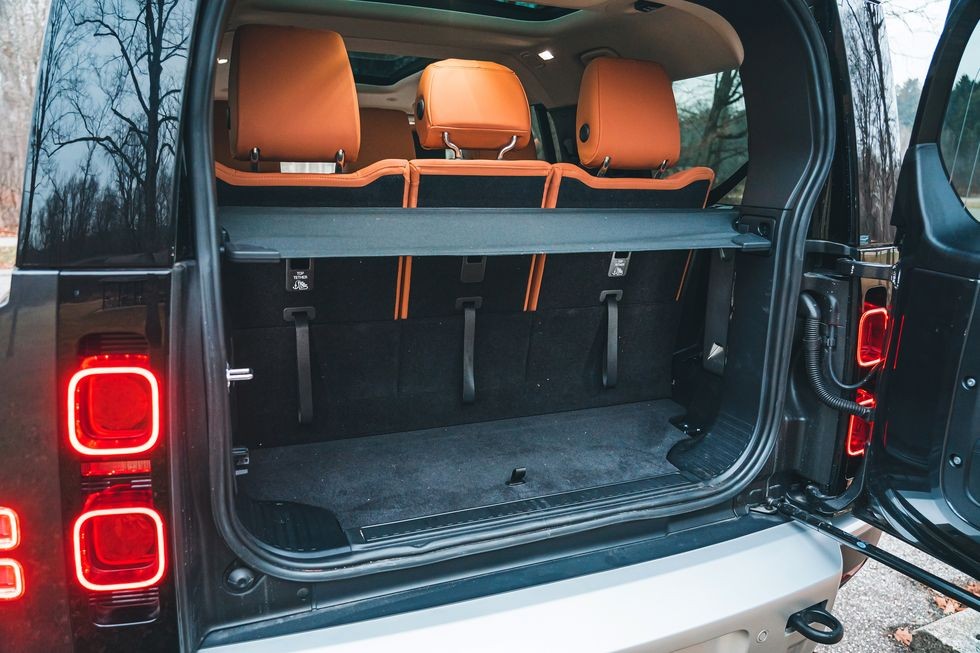Since its release, the Land Rover Defender has been a global symbol of power and off-road performance. The 2023 Defender 110 is an entirely new vehicle for this time, designed for those with an insatiable appetite for exploring. Its classic shape gives off a sense of power with several modifications to suit your taste.
The final chapter in the great Defender story starts with three powerful engine options, improved off-road capabilities, and groundbreaking features. The Defender 110’s interior has the classic Land Rover design and quality, and it was made to be both tough and very comfortable for a smooth ride. The Land Rover Defender 2023 is easy to drive on and off the road, with an attractive interior and exterior. If you don’t require a third row of seats, then there’s almost nothing to dislike about the Defender.
FEATURES
Drivers can choose from two engine options: the turbocharged four-cylinder P300 and a six-cylinder Mild Hybrid Electric Vehicle (MHEV) powertrain, badged P400. The P300 delivers smooth, dynamic power for a 0-60 time of 7.7 seconds, while the P400 MHEV recaptures energy from deceleration to increase performance. Both come with an eight-speed ZF® automatic transmission and twin-speed transfer case for smooth response.
For more power, opt for the 5.0-liter supercharged V8 with 518 hp and a maximum towing capacity of 8,201 lbs. Advanced Tow Assist is also available to help you show off the Defender’s impressive capability. Additionally, Terrain Response® is standard on X trims and optional on others. Drivers can tailor their vehicle’s setup to match any conditions they may encounter thanks to a fully independent suspension and a permanent four-wheel drive system.
EXTERIOR
The 2023 Land Rover Defender 110 lives up to its legacy with a wide selection of exterior design cues. You can choose from 7 body colors, such as Fuji White, Eiger Gray, and Tasman Blue, or pick one of the 12-wheel designs – from 18-inch white-painted pressed steel to 22-inch Luna alloys.
The Defender 110 offers a factory-fitted Satin Protective Film and Gloss Black inset contrast hood with claddings. It has black roof rails for an extra layer of protection and a more rugged look. And if you want to personalize the look even further, four Accessory Packs are available.
INTERIOR
The inside of the vehicle is arranged in a neat, organized way, though not as luxurious as previous Range Rover models. There are visible screws securing the door panels and console, which adds to its charm. All surfaces are soft to the touch, and the 11.4″ touchscreen offers access to the Meridian sound system, navigation, Bluetooth, Apple CarPlay, Android Auto, and Alexa. There’s also an array of useful apps, such as a dimension calculator for the Defender and a trailer towing app.
Below the screen is the gear shift handle, and nearby you can find controls for AC and heated/cooled seats, as well as a button to turn off start/stop. Cup holders, wireless chargers, USBs, and power ports complete this package. You can tweak many vehicle settings on the gauge cluster using a 12.3″ configurable display accessible from the steering wheel.
Rear passengers will appreciate the generous legroom, headroom, air conditioning, and air vents. Heated rear and cooled seats with fold-down armrests, USB-C ports, and power outlets are present for added comfort. The center console also offers lots of storage space beneath it.
ENGINE POWER AND PERFORMANCE
The powerful 5.0-liter V8 Supercharged engine in the 2023 Land Rover Defender 110 can make 518 horsepower and 461 pound-feet of torque. It’s hooked up to an automatic 8-speed transmission with paddle shifters. As is the standard with Rovers, it is accompanied by an all-wheel drive system, one of the best on the market.
The Defender 110 is equipped with an eight-speed automatic gearbox and a low-range capability for four-wheel drive, as expected. Additionally, the 3.0-liter turbo six-cylinder boasts an EPA-estimated 19 mpg combined (17 city/22 highway). The 2023 Land Rover Defender 110 offers an impressive selection of power under the hood.
The base four-cylinder turbocharged engine has 296 horsepower and 295 lb-ft of torque. Stepping up to the 3.0-liter turbocharged six-cylinder engine gives you 395 horsepower and 406 lb-ft of torque. If you want more power, go for the supercharged 5.0-liter V8 engine with a whopping 518 horse and 461 pound-feet of torque. All engines are paired to a four-wheel drivetrain and put through an eight-speed automatic transmission for smooth acceleration.
BODY KIT
The 2023 Land Rover Defender body kits contain amazing pieces that are easy to assemble, with specific fairings with perfectly matched lines.
The body kits contain more than nine pieces and some of which include,
- Front bumper cover
- Grille below the bumper cover
- Front grill
- Front grill
- Front grill
- Pair of decorative panels on both sides of the grill
- Rear bumper cover
PRICING
The 2023 Land Rover Defender 110 has a starting price of $51,700 compared to the 2022 predecessor, with a starting price of $47,700. This is the base cost of the model without options or additional charges.
PROS AND CONS
PROS
- The Defender is an absolute pleasure to drive.
- The high-geared engine conveys great acceleration, and the vehicle feels powerful and big.
- The air suspension system that Rovers are renowned for enhancing the ride quality.
CONS
- Off-roading is excellent with the Defender; however, it doesn’t quite measure up to other luxury SUVs on the road.
- Despite its smooth and quiet ride in a straight line, it is clumsy to change direction when caught up in sharp corners.
- The optional air suspension struggles with the body’s physical inertia, causing noticeable rocking and swaying.
- While it is a significant improvement over the old version, it’s only average compared to modern offerings.
CONCLUSION
To sum up, everything that has been stated so far, the 2023 Land Rover Defender 110 is a luxury car with a practical design and versatile layout that makes it a great fit for any terrain. With the plush choice of seating, interior, and cabin space that screams comfort, the 2023 Defender 110 is the go-to car to be purchased this 2023.
